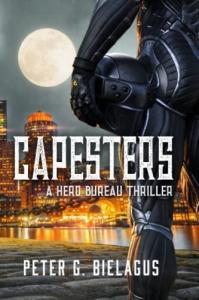1. Show, don’t tell
This might be the most commonly cited mistake among editors. Authors are naturally prone to telling rather than showing. This means that rather than letting the reader experience a story through action, dialogue, thoughts, and senses, the author summarizes or describes what has happened. They often do this by info-dumping prose or by stating a character’s emotions rather than showing how those emotions are conveyed.
Though this admonition may seem like Writing 101, I still find myself scribbling in the margins of even professional authors’ manuscripts, “Show, don’t tell!” It’s amazing how easy it is for authors to fall into the trap of intruding on the story through narrative, instead of letting the characters demonstrate by their own words and actions the point they’re trying to get across. Let the characters tell the story, and don’t underestimate the reader’s ability to draw what they need from compelling dialogue. – Marsha Zinberg
2. Weak opening narrative
Ever dropped a book after reading the first few pages? That’s usually what happens when the author starts the story in the wrong place. It’s an easy mistake to make. While the author knows something exciting will happen soon enough, it’s not obvious to the reader. If they’re not immediately hooked, chances are they won’t stick around long enough to find out what “something exciting” is.
A significant issue I see with many authors is inserting too much backstory [at the beginning]. A reader’s interest has to be developed from the start, which suggests having vivid characterization and action (not meaning explosions, but tension, movement, ideas in opposition) from the get-go. Long, explanatory passages, even if beautifully written, can stop a narrative before it even begins to stretch its legs. – Tom Bentley
3. Over-describing the action
Over-describing is when the author provides unneeded details about the characters’ actions. This slows the pace, lessens tension, and interrupts the flow of the scene.
I find that many writers have a hard time letting readers intuit action — especially physical action — in a scene. It’s very common to find characters who, for instance, “walk across a room, open a door, walk through the door, and then close the door.” Such detail can become laborious for readers and slow down pacing. All that’s really needed is for the character to “walk through the door.” Readers will naturally intuit the rest. – Laura Chasen
4. Unbelievable conflicts
In many fiction genres, conflicts shape the story. Whether they’re external or internal conflicts, it’s important to give those conflicts substance and believability.
Basing conflicts on a misunderstanding, something that could be solved if only the characters were to have a simple conversation, is unsatisfying for the reader and something we see time and again from newer authors.
All stories will have conflicts set out by the plot for the characters to overcome, the peaks and troughs of the journey the characters go on. These external conflicts may be necessary to move a story along, but it’s not what keeps a reader itching to turn the pages. The most satisfying stories also have the main characters dealing with their own internal emotional conflicts — something that is specific to them, that keeps them from the love interest, that makes the case they’re working on personal, that stops the quest they’re on from being easy. This internal conflict is what emotionally involves the reader in the story, in rooting for the character, and seeing the character conquer this in the end is what makes for the most exciting and enticing stories.
The best way to create internal conflict is to really dig deep into the character. Think about what’s driving them, what their motivations are, what their background is, what has happened in the past to make them who they are. From this, think about the emotions they would experience when placed in situations that tap into their conflict and bring these out on the page. – Laurie Johnson
5. Viewpoint
Determining the correct point of view for the narrative is a huge part of a story’s success. We know, for example, that most YA is written in the first-person point of view because younger readers identify with the immediacy of the first-person emotional experience. Romance is usually told through deep third-person omniscient, since an author needs the ability to move seamlessly from the hero to heroine’s perspective. POV determines who tells a story and how — which is why getting it right is critical to a book’s success. For more in-depth information, here is an excellent post on how to choose the right narrative viewpoint and narrator.
Because both omniscient viewpoint and deep character viewpoint can both be written in the third person, inexperienced writers frequently confuse them and allow artifacts of omniscient viewpoint to clutter stories that are otherwise written in deep point of view. Such errors could include describing a ship at sea and then noting that “the captain had no way of knowing a storm was forming over the horizon.” If the captain is the viewpoint character, then the author cannot reveal what the captain does not know. Revealing multiple characters’ thoughts in a single scene is a feature in omniscient viewpoint, but in deep POV, it’s an error. Even the tag “she thought” following a line of internal monologue is out of place in a deep POV story, since if we are in the character’s viewpoint we can’t possibly be reading anyone’s thoughts but hers. – Kristen Stieffel
6. Assumption of knowledge
Authors often write many drafts of their novels. After several revisions, it can be easy to forget that the readers only know what information they’re provided on the page.
This is, to me, the greatest pitfall in authoring any novel. We have a wealth of knowledge about our book, from personal experience and observations to careful research. We have saturated our minds with endless details, as well as visions of our story, characters, and environments. We then write from that empowered position; often, assumption of knowledge skewers our story.
If you wish to expose the spots in your story where you have galloped past pertinent info, do a “character report.” Follow each character in the book and jot down the information you gather from that character — not what you already know, but what you’ve “given” to the reader. Do the same with any world, language, etc. The holes created by assumed knowledge will be laid bare, and you can cleverly fill them up! – Maria D’Marco
Read more at BookBub














